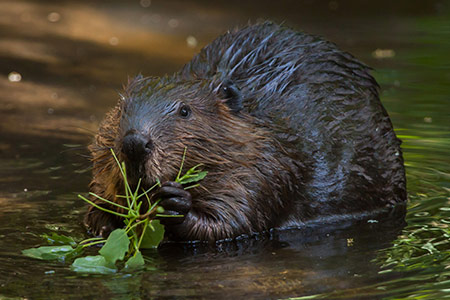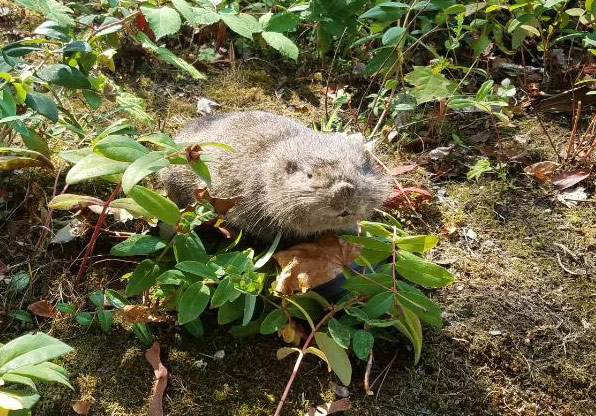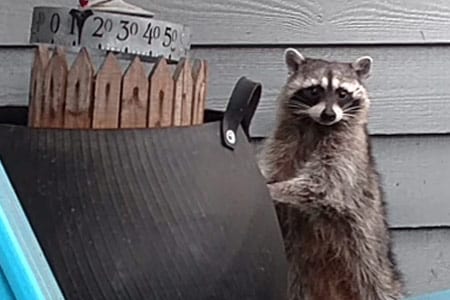RACCOONS
Raccoons are highly adaptable animals making them well suited for urban environments. Adults commonly reach 2.5 feet in length and weigh up to 25 lbs. Raccoon/ human conflicts include females tearing into attics, roofs, chimney chases or crawl spaces to have their litters. Litters of 3-7 “kits” are born in the early spring (April-May). Kits remain with the mother up to one year. During this time mother raccoons are very protective of their young.
SQUIRRELS
Washington has several species of indigenous squirrels. The two most common causes of human/squirrel conflicts in Central and Western Washington are the Eastern Grey Squirrel and Douglas Squirrels. Eastern grey squirrels, an introduced invasive species, will often out compete native squirrels for natural resources driving the native species out. Douglass squirrels (pineys) are smaller and distinguished by a bronze reddish color. They are aggressively persistent at invading structures.
BEAVER
Beavers are North America’s largest rodent. Adults usually weigh 40-60 lbs. Beavers are aquatic living in rivers, lakes, ponds and any wetlands including urban environments. Depending on the habitat resources, established beaver colonies usually consist of 8-13 individuals. Beavers eat aquatic vegetation, bark and the cambium layer of trees. Beavers prefer young green tree branches and trunks for feeding, while larger limbs are used for dam material.
RIVER OTTER
River otters have long sleek bodies, short legs, a stout muscular tail and webbed feet. Adults weigh between 12-30 lbs and are commonly 4 feet long. Otters live in a variety of aquatic habitats including lakes, rivers, ponds, bays and urban waterways. River otters are carnivores eating fish, mussels, crabs, clams etc. River otters feed on both fresh and saltwater prey. River otters digest food quickly, sometimes within an hour after eating. This causes otters to defecate frequently in large quantities.
MUSKRAT
Muskrats are small-medium sized aquatic rodents. Muskrats can be confused with Nutria to the untrained eye. Muskrats are much smaller reaching 2-4 lbs and have a vertically flattened tail. Muskrats eat all types of aquatic vegetation and have burrows under the water’s surface of the banks.
MOUNTAIN BEAVER
Mountain Beavers are rarely seen primitive rodents. They are 12-14 inches long and live in heavy vegetation or wooded areas. They have long curved front claws that are mainly used for digging; they feed on vegetation and live in extensive tunnel systems. Mountain beavers tunneling habits can cause erosion or instability on hillsides.
BATS
There are 40 species of bats occurring in the United States. More than 15 species can be found in Washington State. All bats of North America are insectivores catching them in flight with their mouth, wing or tail membranes. Bats may be encountered in human structures including bridges, wells, tunnels and buildings.
SKUNK
Two species of skunk occur in Washington state, spotted skunks and striped skunk. The spotted skunk sometimes called a pole cat or civet cat is small 14-18 inches and rarely causes issues for people. The striped skunks are usually 22-32 inches in length. Skunks are omnivorous and will eat many types of food but their diet typically consists of insects.
COYOTE
Coyotes are small to medium sized canines that resemble dogs. Adults typically weigh 30-40 lbs. Coyotes have an extremely variable diet from deer to livestock, pets and some plants. However the majority of their diet is small mammals like rodents or rabbits. Conflicts with humans usually arise when people are intentionally or unintentionally feeding coyotes.















